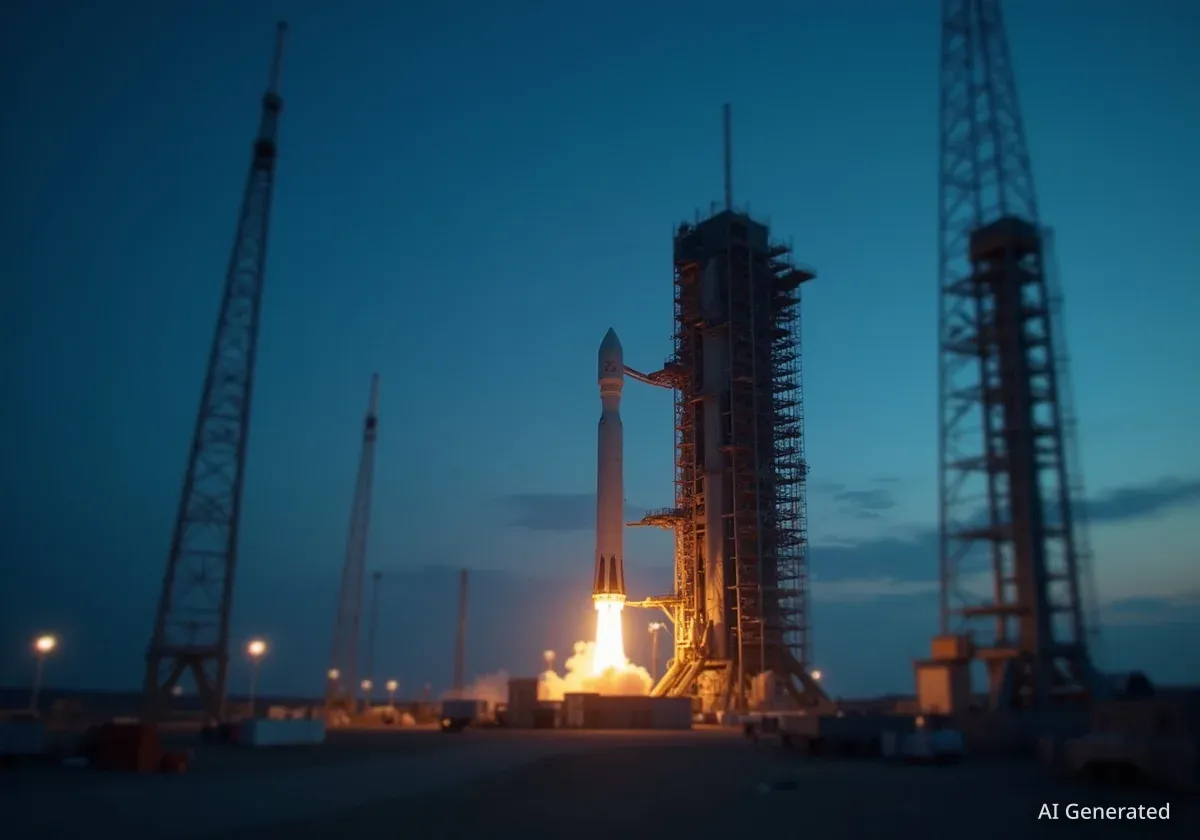NASA has reduced its workforce at the Marshall Space Flight Center (MSFC) in Alabama, letting go of several dozen contract employees involved with the International Space Station (ISS). The job cuts, which took place on Friday, are part of a long-term strategic shift as the agency prepares for the eventual decommissioning of the orbiting laboratory.
The layoffs affect personnel who support the vital scientific work conducted aboard the ISS. Officials have confirmed the move is directly linked to the planned deorbit of the space station, currently scheduled for 2030, marking a significant transition in the nation's human spaceflight program.
Key Takeaways
- Several dozen contract employees working on the International Space Station program at MSFC were laid off.
- The job reductions are part of NASA's planned transition ahead of the ISS deorbit in 2030.
- Marshall Space Flight Center is home to the ISS Payload Operations Integration Center, a critical hub for space station science.
- This follows previous workforce reductions at NASA centers earlier in the year, connected to broader budget adjustments.
The End of an Era for the ISS
The International Space Station has been a cornerstone of human space exploration for over two decades, serving as a continuous human presence in low-Earth orbit. However, with its operational lifespan concluding at the end of this decade, NASA is beginning the complex process of winding down its extensive support infrastructure.
The recent job cuts at Marshall are a direct consequence of this transition. According to Congressman Robert Aderholt’s office, the affected employees were integral to the ISS mission, but their roles are being phased out as the program's needs change. This planned reduction is an early step in a multi-year process that will see NASA shift its focus and resources toward future exploration goals, including the Artemis program and commercial space stations.
Marshall's Role in Space Station Operations
The Marshall Space Flight Center in Huntsville, Alabama, plays a crucial role in the day-to-day science conducted on the ISS. It houses the Payload Operations Integration Center (POIC), the primary science and research command post for the station. Teams at the POIC work around the clock, communicating with astronauts to guide and monitor the hundreds of experiments performed in microgravity each year.
The work done at MSFC has been fundamental to breakthroughs in medicine, materials science, and our understanding of life in space. The personnel involved in these operations are highly specialized, coordinating complex scientific timelines between researchers on the ground and the astronaut crew in orbit.
A Broader Trend of Workforce Adjustments
These layoffs are not an isolated event for NASA or MSFC. They are part of a larger pattern of workforce adjustments influenced by federal budget proposals and strategic shifts within the agency. Earlier this year, the President’s proposed 2026 budget included cuts to NASA's overall staff and funding, signaling a period of fiscal tightening.
A few months ago, reports indicated that more than 2,000 senior-ranking NASA employees across the country were expected to leave their positions. This included 279 employees at the Marshall Space Flight Center alone. These earlier reductions were part of a broader government initiative affecting various federal agencies.
By the Numbers: NASA Workforce
- 2030: The year the International Space Station is scheduled to be deorbited.
- Dozens: The number of contract employees recently let go at MSFC.
- 279: The number of senior MSFC employees previously identified in a larger, agency-wide workforce reduction.
A NASA spokesperson previously confirmed that the agency was complying with directives from the U.S. Office of Personal Management (OPM) regarding federal employment levels. The combination of budget constraints and the strategic sunsetting of legacy programs like the ISS is creating a challenging environment for the agency's workforce.
Transitioning to a New Space Economy
While the end of the ISS program brings workforce reductions, it also signals a major pivot in U.S. space policy. NASA is actively working to foster a commercial economy in low-Earth orbit (LEO). The agency plans to become a customer, rather than an operator, of future commercial space stations developed by private companies.
This strategy is intended to free up NASA resources to focus on deep-space exploration, such as missions to the Moon and Mars under the Artemis program. The transition is designed to create a sustainable ecosystem where private industry manages LEO operations, while NASA pushes the boundaries of human exploration further into the solar system.
However, this transition period involves difficult decisions, including the reduction of a skilled workforce that has supported the ISS for years. The expertise of the engineers, scientists, and technicians at centers like Marshall will be critical for future missions, but the immediate future involves realignment and adjustment as legacy programs conclude.
The move is a clear indicator that the long-planned decommissioning of the International Space Station is moving from a distant concept to a present-day reality, with tangible impacts on the people who have kept it running.
As the 2030 deadline approaches, further adjustments to NASA's workforce and infrastructure are expected. The focus for communities like Huntsville will be on how the skills and knowledge from the ISS era can be successfully transitioned to support the next generation of spaceflight, both in the government and burgeoning private sectors.





